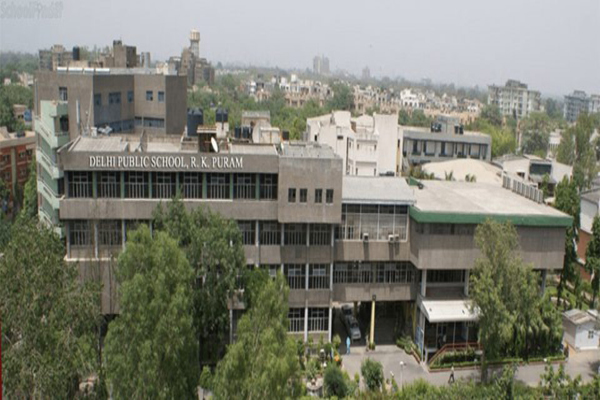 T V Joe Layng, PhD, Director of Learning Sciences, Mimio
T V Joe Layng, PhD, Director of Learning Sciences, Mimio
Today’s classrooms are in transition. Technology of all sorts is making its way into the classroom and offering new ways to engage learners. The transition is not smooth, nor is it following a single path. Classroom technology was once limited to presentation via VCRs, filmstrips, and slide projectors. Today we find more interactive technology that uses LCD projectors, interactive whiteboards, notebook and desktop computers, and tablets such as the iPad.
Which technology? No “right answer”
There is no one “right answer” as to which technology will best engage students and improve outcomes. Teachers have a vision of what an engaged classroom looks like, and they strive to create that in their own classroom. Practices that make that vision more likely are more readily adopted, while those that don not are resisted. However, seeing our students engaged or feeling good about what we are doing may not be enough. Some teachers may assume that more interaction is better than less, that collaboration is better than independent study, and that tackling problems and projects through discovery and inquiry improves classroom practice and produces more authentic learning. Technology purchases often follow such beliefs.
Effective, flexible products are key
For the greatest return on their investment schools must purchase products that support effective instructional practices and that are flexible with regards to technology usage. Essential to a successful outcome is that interactive learning activities have clear student accomplishments specified, that there is a way to measure those accomplishments, that the activity actually leads to those accomplishments, and that most, if not all, learners demonstrate the accomplishments. The goal must be to combine effective instructional practices with the changing technological landscape now open to teachers. Done well, one can inform and enhance the other. Done poorly, we may find there will not be the hoped-for return on our educational technology investment. When purchasing instructional products, schools need products that allow for maximal flexibility among and between technologies, and that actually produce real, standards-based outcomes important to teachers and students alike.
How much penetration each interactive technology has differs from school to school and from classroom to classroom, making curriculum choices even more difficult. Schools may have a computer lab, but no computers in the classroom. They may have interactive whiteboards, but no computer lab. They may have computers in the classroom, but no whiteboard. And they may have any or all or none of these, and have iPads or tablets.
Accordingly, the technologies may differ from classroom to classroom and may change over time. A school that once focused on interactive whiteboards may shift that focus to iPads. Or, we may see a shift from computer labs to notebooks used in class or at home.
It is at times a confusing and hard to- manage environment. Adding to this confusion is that none of this technology works without content. Applications are key to the effective use of technology. Without good content, the technology is just metal, plastic, silicon, and glass. Teachers may be asked to develop content, but with an average of fifty minutes of preparation time available per day, there is only so much that can be done.
In what, then, should schools invest— technology, content, or both? What happens if schools invest heavily in applications for computer labs and then decide to shift to tablets? Or, what happens if a school likes the individualization afforded by computer applications, but wants the collaborative environment that can be provided by in- teractive whiteboard activities? It is unlikely that an application purchased for one interactive environment will work in another, or that an application written for individualized instruction can be seamlessly integrated with a more social, collaborative classroom approach. Schools are facing a real dilemma.
Where do they spend scarce technology and application dollars?
And will any of these actually produce the learner outcomes schools are after? What is needed during this transition are applications that can help schools reach their teaching and learning goals no matter what devices they may have, now or in the future. These should be research-based applications that either work across devices, or supply a similar outcome and work seamlessly with all their devices. Further, these applications should take advantage of the special properties of each type of interactive technology. For example, on a computer, highly adaptive, individualized learning can be provided that may not be available in a classroom. Conversely, using an interactive whiteboard may provide important collaborative engagement that is not possible for a learner using a computer.
A model for effective use of technology for instruction
Imagine a reading comprehension program that was designed to take advantage of a wide range of technology available in a classroom, including computers, interactive whiteboards, and perhaps tablets. A teacher might begin by assigning the first three lessons of the program to be completed online s homework (eg, Leon et al, 2011). Learners could access the lessons using a notebook or iPad they have at home, or perhaps use a computer that may be located in a library or computer lab at school. The teacher could access eportsthat not only let her know if the work was done, but also escribe the precise performance of each learner. The online pplication featuring continuous adaptation would catch and correct any of the errors made by the learner. The program would provide individualized correction based on the type of error that occurs. The teacher would know how many questions were answered correctly the first time, versus after a correction. Learners with many corrections would eventually answer correctly, but could be flagged as perhaps needing more attention. The teacher could then provide whole-classroom interactive whiteboard lessons that review and extend the material learned online. Learners would be able to participate and verbalize the strategies they learn. No interactive whiteboard? Teacher guides and learner response materials could be provided to help transfer and extend skills learned in the program.
The teacher may find that some of the learners do not have the basic decoding skills necessary for the lessons. A brief two-minute assessment administered to each learner might find that some need to begin in the second half of an online phonics program, while others need to begin earlier.
As the program proceeds, skills learned online become the basis of collaborative in-class activities. The activities extend beyond the multiple-choice, inquiry-based lessons provided online, and give learners the opportunity to construct open-ended answers to literal, inferential, derived vocabulary, and main idea questions. Material from a range of subjects might be included in the collaborations as the programs progress and the learners master increasingly complex reading tasks. We should see learners eagerly extend their new comprehension abilities to new areas.
Other teachers may focus on the whole-classroom lessons, and reserve online or iPad work for those learners who seem to be having trouble in class. Yet others may rely on the online program and use the interactive classroom lessons for small-group instruction for targeted learners. And yet others may begin with the interactive whiteboard lessons and subsequently rely more on the online lessons as a result of acquiring iPads for their classrooms. The options are many and the flexibility great. What all of these teachers want, however, is content that will help them achieve their classroom goals—no matter what technology is theirs to use, or how they choose to use it.
In summary, schools need to be able to take advantage of any or all instructional technology found in any combination that meets their needs. They might introduce iPads in one classroom, but have learners in other classrooms access the same lessons on a computer. If a classroom has no computers, but does have an interactive whiteboard, students should still be able to learn the same material. What’s more, teachers should be able to take advantage of each technology’s special features, such as whole group or small-group instruction using interactive whiteboards, individualized instruction using computers, or mobile learning using iPads.
What today’s schools require is a completely integrated solution, whether it be instruction provided by iPads or computers, accessible at school or in the home, or group interactive technology in the classroom. And all must work together to provide the best possible learning outcomes.
References
Klahr, D & M Nigam (2004). The equivalence of learning paths in early science instruction:
Effects of direct instruction and discovery learning. Psychological Science, 15, 661-667.
Leon, M, V Ford, H Shimizu, A Stretz, J Thompson, M Sota, JS Twyman, and TVJ.
Layng (2011). Comprehension by design: Teaching young learners to comprehend what they read. Performance Improvement Journal, 50(10) 40–47. Robbins, JK (2011). Problem solving, reasoning, and analytical thinking in a classroom environment. The Behavior Analyst Today, 12(1), 40-47.k



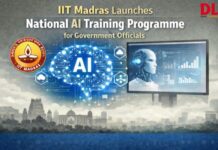

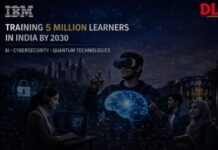




 Chandan Sonowal,
Chandan Sonowal, We are in a world that needs education to be changed so that it responds in a way that provides what the world needs, opines Mark Parkinson, Executive Director and Head of School, Kunskapsskolan Eduventures, Gurgaon
We are in a world that needs education to be changed so that it responds in a way that provides what the world needs, opines Mark Parkinson, Executive Director and Head of School, Kunskapsskolan Eduventures, Gurgaon T V Joe Layng, PhD, Director of Learning Sciences, Mimio
T V Joe Layng, PhD, Director of Learning Sciences, Mimio British publishing and education company, Pearson, has completed its acquisition of TutorVista and acquired the remaining 20 percent equity in the Bangalore based online education services company. In 2011, Pearson acquired a majority stake in the then five-year old TutorVista for Rs 577 crore, valuing it at around Rs 1,000 crore.
British publishing and education company, Pearson, has completed its acquisition of TutorVista and acquired the remaining 20 percent equity in the Bangalore based online education services company. In 2011, Pearson acquired a majority stake in the then five-year old TutorVista for Rs 577 crore, valuing it at around Rs 1,000 crore.
 Adil Jahangir, GM
Adil Jahangir, GM Ramya Chatterjee,
Ramya Chatterjee,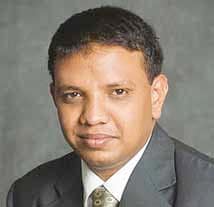
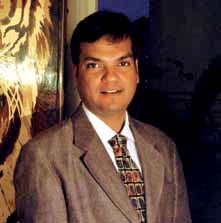 Rajeev Singh,
Rajeev Singh,
 Tarun Jain,
Tarun Jain,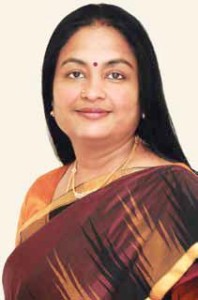 Dax Network, networking and surveillance company, has launched a programme for network engineers aimed at enhancing the skills of young employed engineers and to make the final year students job-ready. Sudha Jagadish, CEO, DAX Networks tells about the plans to address skilled manpower crunch for the networking industry by having tie ups with various educational institutions. In conversation with Pragya Gupta, ENN
Dax Network, networking and surveillance company, has launched a programme for network engineers aimed at enhancing the skills of young employed engineers and to make the final year students job-ready. Sudha Jagadish, CEO, DAX Networks tells about the plans to address skilled manpower crunch for the networking industry by having tie ups with various educational institutions. In conversation with Pragya Gupta, ENN
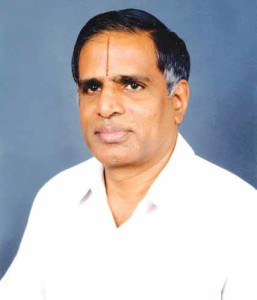 Prof S Sadagopan provides a succinct overview of the educational, research and social activities that the IIIT, Bangalore is involved in. In conversation with Aparajita Gupta
Prof S Sadagopan provides a succinct overview of the educational, research and social activities that the IIIT, Bangalore is involved in. In conversation with Aparajita Gupta Unified Threat Management (UTM) is a comprehensive solution that has gained widespread popularity as a primary network security solution for organisations
Unified Threat Management (UTM) is a comprehensive solution that has gained widespread popularity as a primary network security solution for organisations









